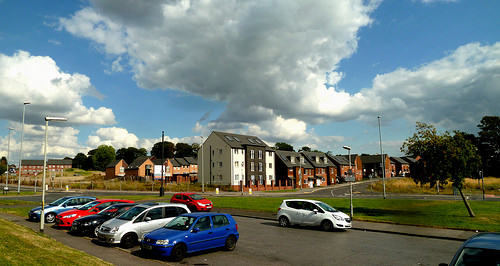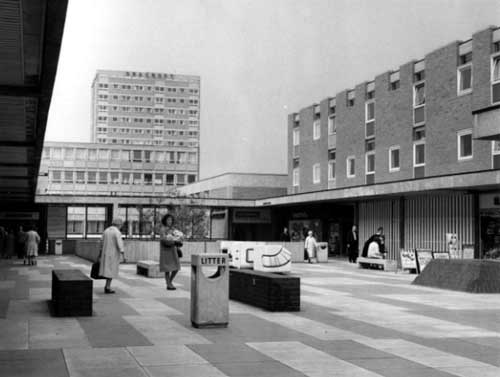Recent History of Seacroft
With the expansion of Leeds in the 1950’s after the war – Seacroft was transformed from a village to a “satellite town within the city boundary” containing one of the largest areas of local authority housing in the country. Building began with the traditional red-brick semis around the Beechwood area, to the North of the estate. In the 1960s many of the prefabs and high rise flats were constructed on the estate. In addition to this vision for Seacroft, other areas surrounding Seacroft were built using the same principle, in the 1960’s work started on building the Swarcliffe and Stanks areas and in the 1970’s work began on building Whinmoor, none of these were however as large or ambitious estates as Seacroft, the intention being that these areas would use many of the amenities built along with the Seacroft Estate such as the Civic Centre and Seacroft’s secondary schools, so amenities were kept to a minimum in Swarcliffe and Whinmoor, with the estates only having small local shops, public houses and primary schools.
The Seacroft Centre was opened by Her Majesty the Queen on a foggy Thursday October 21st 1965. The Queen arrived by rail at Cross Gates railway station, the Royal Train having stayed overnight on the old line from Garforth to Kippax. Seacroft Post Office closed in November 1967, when the Crown Post Office opened in the new Centre. In 1993, Leeds City Council announced a multi-million pound development of the Seacroft Centre, serving an estate developed from 1947 initially with 7000 dwellings. In 1965, the population of the estate was 40,000. Work on the new Seacroft Shopping Centre began in 1996.
In 2000 the new ‘Seacroft Green Shopping Centre’ opened. This huge supermarket as well as the other shops promised to create hundreds more jobs than would be lost through the loss of trade in the Civic Centre. The centre was not entirely popular with many local residents who felt they had lost the centre of their community to a supermarket. The rebuilding of the Civic Centre did not alter the deprivation experienced in the area and the condition of many of the houses deteriorated, particularly amongst the prefabricated housing to the South West of the estate. Many houses were vacated and either condition or lack of demand dictated that the council boarded them up. Many of the high rise flats were demolished leaving a shortage of 1 and 2 bed housing in the area as the majority of the tower blocks were allocated to older residents.
 The recent new housing developments promised much and delivered below expectations in terms of re-generating the area. Recently a new building area on South Parkway has begun.
The recent new housing developments promised much and delivered below expectations in terms of re-generating the area. Recently a new building area on South Parkway has begun.
A group are currently working towards the designation of Seacroft as an area for neighbourhood planning to try and involve local people who live, work or do business in the area to put plans together for the next 15 years. The whole area is about to experience another expansion as work has begun on the Leeds East Extension along the eastern edge of the city down to the M1. The East Leeds Orbital Route – ELOR – began in 2019 and the design for the main ELOR was completed in summer 2020. Leeds City Council has been working with construction partner Balfour Beatty to complete the first two phases. Works commenced on the construction of the main ELOR in January 2020. The works are due to be completed by Autumn 2022 … to be continued! The road has now opened. In February 2023, work continues in landscaping the area; hundreds of trees are being planted.


